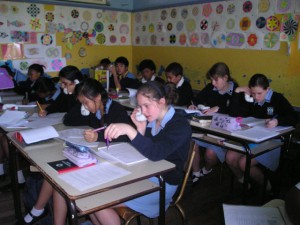 Systematic, direct instruction to enable learners to better differentiate the phonetic sounds and letter patterns for decoding and encoding words. The Sebezaphone is an effective tool in establishing the essential link between sound and print because it helps the learner focus on the ‘sound’ of the print/letter patterns.
Systematic, direct instruction to enable learners to better differentiate the phonetic sounds and letter patterns for decoding and encoding words. The Sebezaphone is an effective tool in establishing the essential link between sound and print because it helps the learner focus on the ‘sound’ of the print/letter patterns.
- Phonemic Awareness: The Sebezaphone is a fantastic tool when teaching the direct print-sound relationship. It enhances hearing and intentionally focuses the learner on the sound, thereby developing and strengthening the necessary print-sound relationship. When the learner speaks softly into the phone, their attention is focused on purposefully listening to the sound coming out of the earpiece. The amplified sound enables learner to better hear, distinguish or manipulate phonemes by using the letters of the alphabet for the targeted language. This can be done in both individual, group and class situations.
- Have learners speak into their Sebezaphone in a whispered voice during direct, systematic phonics instruction
- Have learners say the sounds or words into the Sebezaphone to identify, distinguish, segment, blend or manipulate sounds.
- For example, use pictures for learners to orally segment the word into syllables or sounds, identify the beginning, middle or ending sounds in the word.
- Teacher leans close to the learners to hear each child respond. Note the accuracy of the child’s response.
- Have learners generate words using the sound in the initial, middle or end positions of the words. They can check their accuracy using the phone and comparing words with a partner.
- Doing the Word Wall to master high-frequency words and spelling patterns in systematic, multilevel instruction.
- Give each learner a Sebezaphone to use to
- Sound out the words, repeat the words, break the words up into syllables, spell the words, and rhyme the words
- Practice saying, spelling, rhyming Word Wall Words and building new words from those already on the Wall.
- Think-Pair-Share: learners sit eye-to-eye, shoulder to shoulder (facing in opposite directions and close to each other’s ear holding the Sebezaphone). They listen to each other say the words, syllables, and spelling, and check each other’s accuracy. Using the Co-operative Learning People Organizer Think-Pair-Share they can create riddles for each other or for other pairs to guess which word on the word wall rhymes with the word they give as the clue.
- Give each learner a Sebezaphone to use to

